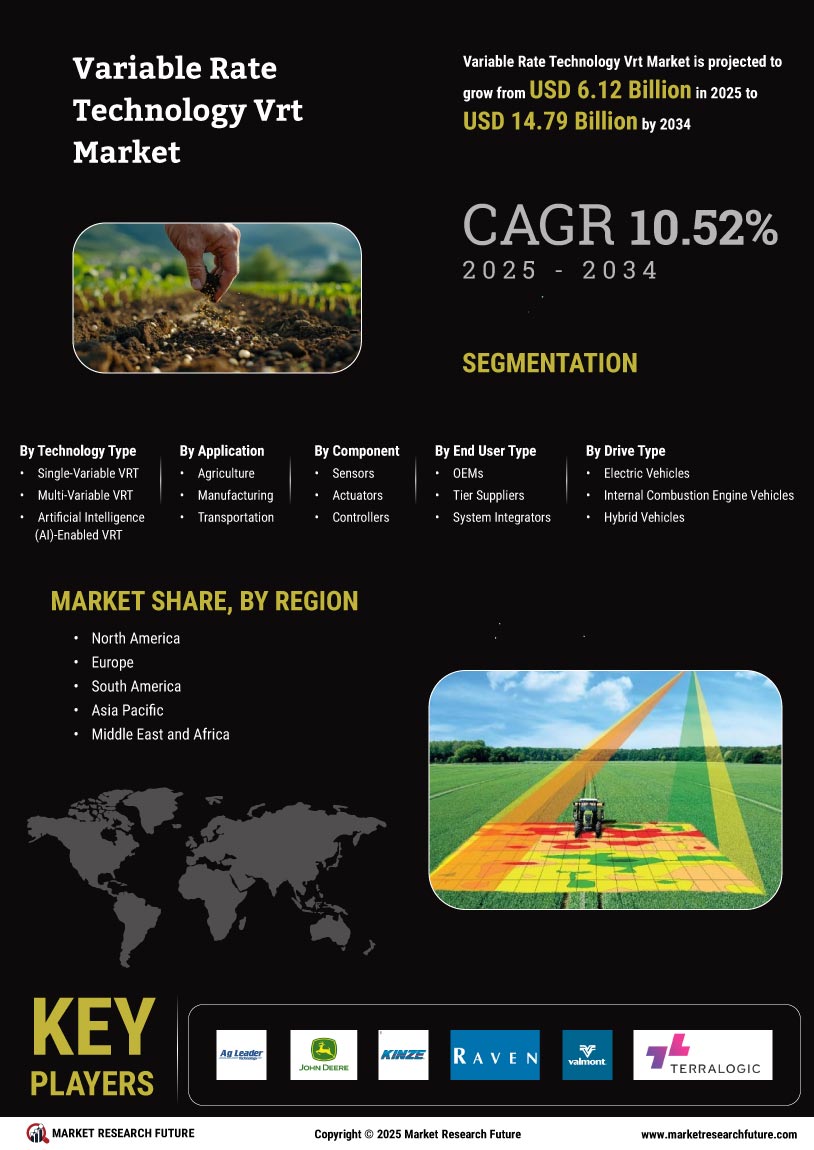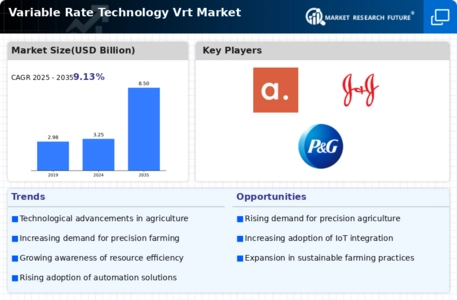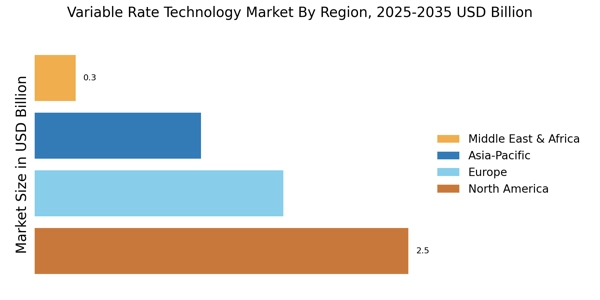Government Initiatives and Support
Government initiatives aimed at promoting sustainable farming practices are significantly influencing the Variable Rate Technology Market Vrt Market. Various countries are implementing policies that encourage the adoption of advanced agricultural technologies, including Variable Rate Technology Market. For instance, subsidies and grants for farmers adopting precision agriculture techniques are becoming more prevalent. This support not only alleviates the financial burden on farmers but also fosters innovation within the Variable Rate Technology Market Vrt Market. As governments recognize the importance of food security and environmental sustainability, the alignment of agricultural policies with technological advancements is expected to drive market growth in the coming years.
Advancements in Data Analytics and IoT
The integration of data analytics and Internet of Things (IoT) technologies is revolutionizing the Variable Rate Technology Market Vrt Market. These advancements enable farmers to collect and analyze vast amounts of data, leading to more informed decision-making regarding resource allocation. The ability to monitor soil conditions, weather patterns, and crop health in real-time enhances the effectiveness of Variable Rate Technology Market applications. As the agricultural sector increasingly embraces data-driven approaches, the demand for sophisticated Variable Rate Technology Market solutions is expected to rise. This trend suggests a promising future for the Variable Rate Technology Market Vrt Market, as it aligns with the broader movement towards smart farming.
Rising Labor Costs and Skill Shortages
The Variable Rate Technology Market Vrt Market is also being shaped by the rising labor costs and skill shortages in the agricultural sector. As labor becomes increasingly expensive and difficult to source, farmers are compelled to seek technological solutions that enhance operational efficiency. Variable Rate Technology Market offers automation and precision that can mitigate the reliance on manual labor, thus addressing these challenges. Reports indicate that labor costs in agriculture have risen by approximately 20% over the past five years, prompting a shift towards technology-driven solutions. Consequently, the Variable Rate Technology Market Vrt Market is likely to see accelerated adoption as farmers strive to maintain profitability while navigating these economic pressures.
Increasing Demand for Precision Agriculture
The Variable Rate Technology Market Vrt Market is experiencing a surge in demand driven by the growing adoption of precision agriculture practices. Farmers are increasingly seeking methods to optimize input usage, enhance crop yields, and reduce environmental impact. According to recent data, the precision agriculture market is projected to reach USD 12 billion by 2026, indicating a robust growth trajectory. This trend is likely to propel the Variable Rate Technology Market Vrt Market as it offers tailored solutions for seed, fertilizer, and pesticide application, thereby maximizing efficiency and productivity. As agricultural stakeholders recognize the economic and ecological benefits of precision farming, the integration of Variable Rate Technology Market becomes essential for sustainable agricultural practices.
Growing Awareness of Environmental Sustainability
There is a notable increase in awareness regarding environmental sustainability among consumers and farmers alike, which is positively impacting the Variable Rate Technology Market Vrt Market. As the agricultural community faces scrutiny over its environmental footprint, the adoption of Variable Rate Technology Market is seen as a viable solution to minimize waste and optimize resource use. This technology allows for precise application of inputs, reducing runoff and enhancing soil health. Market Research Future indicates that sustainable farming practices are becoming a priority for a significant portion of the agricultural sector, suggesting that the Variable Rate Technology Market Vrt Market will continue to grow as stakeholders seek to align with sustainability goals.


















Leave a Comment